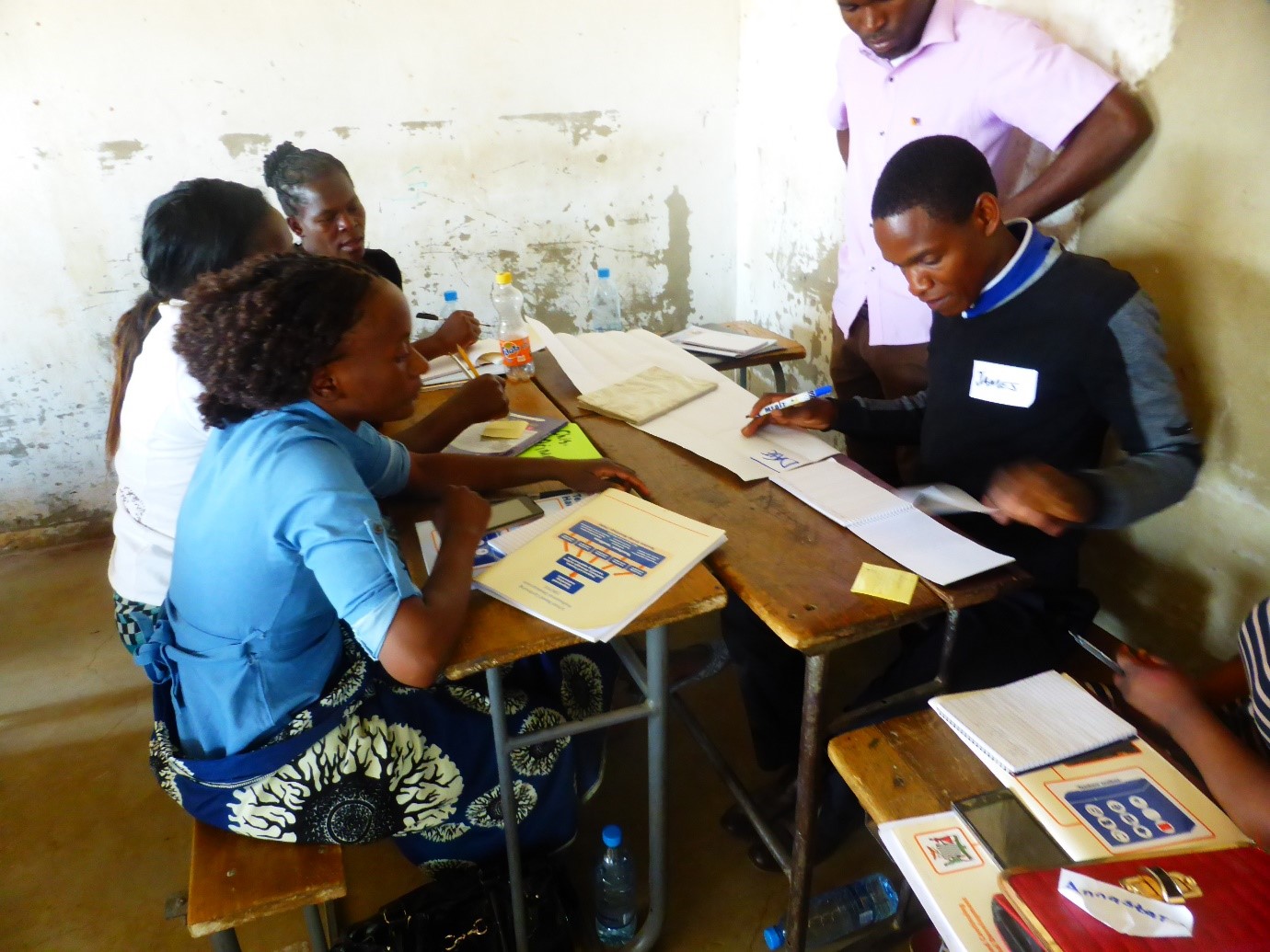Week 3: Creating a learning organisation
3. A Case Study of School-based teacher development

Teachers in Zambia working together in a Teacher Group Meeting to plan lessons
There are many possible models for School based teacher development. An inclusive school will need to develop a model that works for that school, depending on the timetable, the roles, school priorities and resources. This case study describes a model that has been developed in Zambia.
In Zambia, school-based continuing professional development (SBCPD) is part of national policy and is known as SPRINT (School Programme for Inservice Training for the Term). It is based on research which suggests that continuing professional development is more effective when it is on-going, takes place in school and is linked to practice. However, the system in place, based on ‘lesson study’ has not delivered the improvements expected. An ‘enhanced SPRINT’ programme has been developed in Central Province, by a team from The Open University, UK and World Vision Zambia, working with the Ministry of General Education. This is described in the case study
|
Case Study: School-based CPD in Zambia In Zambia, each school has a designated ‘school in-service co-ordinator’ (SIC) who works with the head teachers to plan regular teacher group meetings (TGMs). In the enhanced system teachers use TGMs to work through resources which explain active teaching approaches such as effective questioning, pair work, group work, role-play, storytelling, and games, before planning activities to try in their own classroom. Having tried the activities with their class, they come back together and discuss how it went. The provision of resources to support teacher group meetings has enabled teachers to plan more engaging classroom activities. As a result of working in this way, teachers are collaborating more, and learners are actively participating in lessons. The resources are available as OER. Also, teachers are learning more about their learners. Many commented that during pair work and group work for example, they have noticed that learners who they had previously thought of as ‘slow’ or ‘shy’ are able to do more than they expected. They have also commented that attendance at school as improved as lessons are more interesting and learners feel more included. Head teachers report that TGMs are more purposeful and better attended. |
Activity 3.6 School-based Teacher Development (SBTD)You are advised to spend 20mins on this activity Listen to the District Educational Standards Officer (DESO) form Chisamba in Zambia, talking about the impact of the enhanced SPRINT system. In Zambia, the system has:
……..that is:
Thinking about your own context, note down in your study notebook, aspects of the Zambian system which would work (or already exist) and aspects which might present a challenge. Make a contribution to the Week 3 Forum, highlighting one challenge that SBTD might present in your context, and one opportunity. |